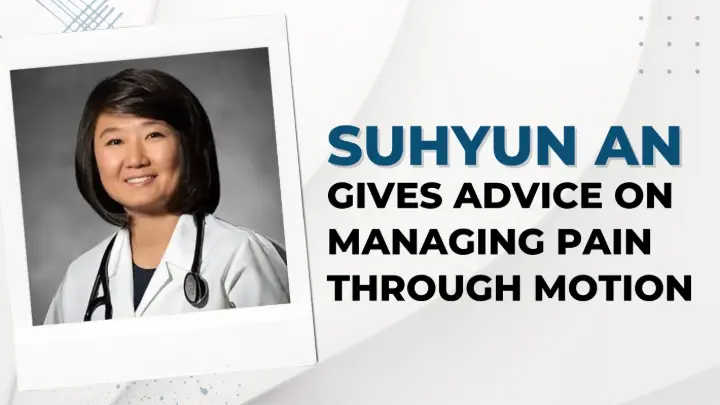
Living with chronic pain can be frustrating. It affects how you move, work, sleep, and enjoy life. While many people turn to rest or medication for relief, Dr. Suhyun An—a well-known expert in pain management and regenerative medicine—believes there’s a better, more active approach: using motion as a tool to manage and reduce pain.
In this blog, we’ll share Dr. An’s practical advice on how gentle movement can help ease discomfort, support healing, and improve your overall well-being.
Why Movement Helps With Pain
When you’re in pain, your first instinct might be to lie down and avoid activity. And in some cases, rest is necessary, especially right after an injury. But staying still for too long can make things worse.
Dr. Suhyun An explains that regular, controlled movement can:
- Increase blood flow to injured areas
- Help reduce inflammation
- Improve flexibility and joint function
- Prevent muscles from weakening
- Boost your mood and energy levels
In short, motion can help your body heal more naturally.
Start With Gentle, Safe Movements
You don’t need to hit the gym or do anything intense. Dr. An recommends starting small and choosing movements that feel good. The goal isn’t to push through pain but to stay active in a way that supports recovery.
Here are a few types of gentle movement she suggests:
1. Stretching
Taking a few minutes each day to stretch can loosen tight muscles and improve your range of motion. Focus on areas where you feel stiff, and move slowly to avoid injury.
2. Walking
Walking is one of the easiest ways to stay active. A short walk around the block or even inside your home helps keep your joints moving and your blood circulating.
3. Water Exercises
Swimming or water aerobics takes pressure off your joints while still giving your body a workout. The water supports your weight, making it a great option if you have back pain or arthritis.
4. Yoga or Tai Chi
These low-impact practices combine movement, balance, and breathing. They not only improve flexibility but can also reduce stress, which often makes pain worse.
Listen to Your Body
Dr. Suhyun An emphasizes the importance of listening to your body. If something hurts, stop. If a certain movement feels good, make it a regular part of your routine. Pain is personal, so what works for one person might not work for another.
It’s also a good idea to talk to a healthcare provider before starting a new exercise routine, especially if you’re dealing with ongoing or severe pain.
Movement Is Part of a Bigger Picture
Pain management isn’t one-size-fits-all. While motion is a key part, Dr. An often combines it with other treatments like regenerative therapy, chiropractic care, or physical therapy. The goal is to treat the root cause of pain, not just the symptoms.
By staying active and working with a pain specialist, many people find they can move more freely and feel better over time.
Final Thoughts
Managing pain doesn’t always mean stopping movement—it often means finding the right kind of movement. Dr. Suhyun An’s approach shows that motion can be one of the most powerful tools for long-term relief with the right guidance and a little consistency.
Start small when dealing with joint pain, back issues, or general stiffness. A short walk, a few stretches, or a gentle yoga session can make a big difference. The path to feeling better might be simpler—and more active—than you think.